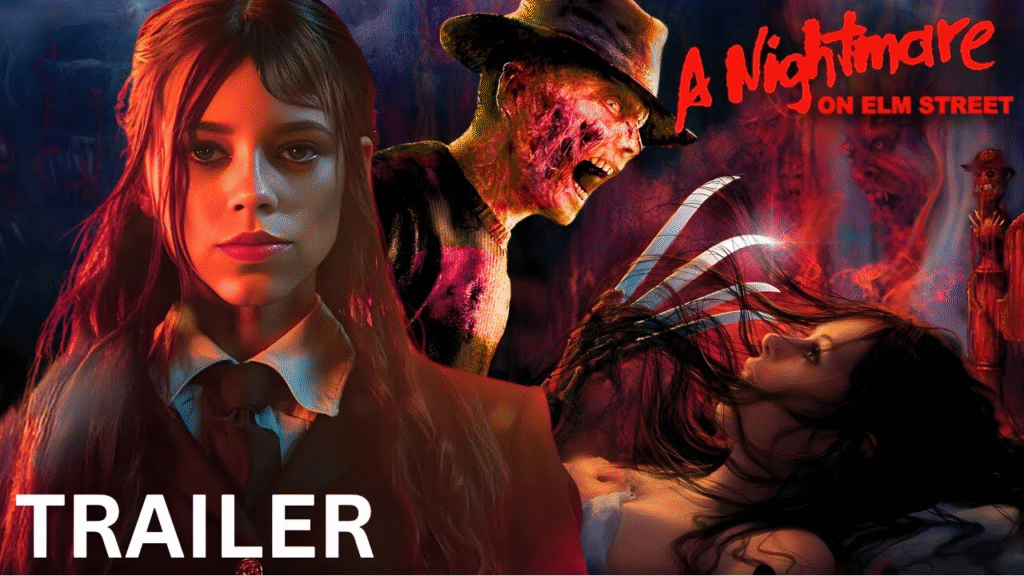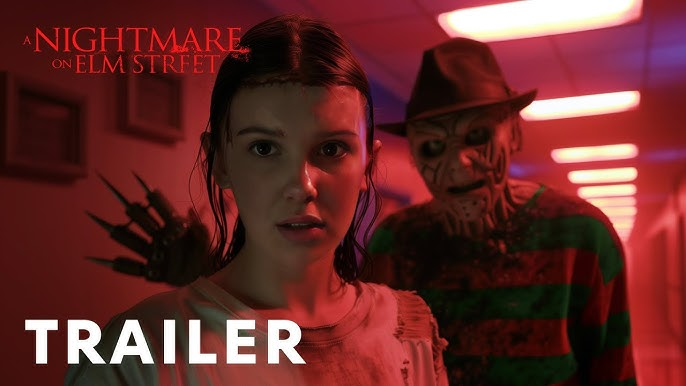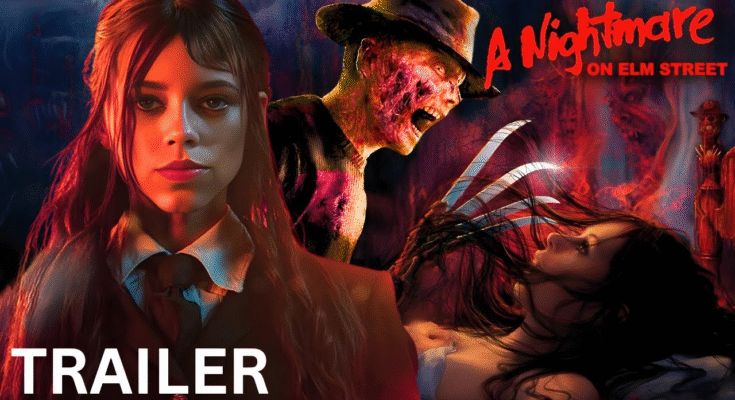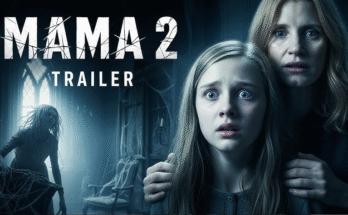The boiler room burns again — but this time, the flames are colder, crueler, and far more beautiful. A Nightmare on Elm Street: Blood in the Clock resurrects Wes Craven’s immortal terror through a surrealist lens — blending art-house horror with pulse-pounding fear. Directed with hypnotic precision by Oz Perkins, this is not a reboot, but a requiem — a fever dream where time itself becomes Freddy Krueger’s newest weapon.

The story begins in silence: a suburban bedroom frozen mid-motion. Clocks have stopped. Shadows move on their own. And somewhere deep inside the ticking void, a voice hums nursery rhymes backward. It’s Freddy — but not the wisecracking ghoul we once knew. Bill Skarsgård transforms him into something more operatic, almost tragic — a being equal parts stand-up devil and decaying god, whose laughter curdles like rust in a dream. His Freddy doesn’t just kill — he performs.
When nightmares start bending reality, Anya Taylor-Joy’s Nancy emerges as the series’ most complex heroine yet. She’s not a damsel, nor a mere survivor — she’s a lucid dreamer, a warrior of the subconscious. Every time she closes her eyes, she steps into Freddy’s stage — a world of syrup-sticky floors, whispering mirrors, and clocks that bleed sand instead of time. Taylor-Joy’s ethereal intensity turns terror into poetry; she’s the perfect counterpoint to Skarsgård’s macabre charisma.

The concept — time as the enemy — is genius. Freddy no longer attacks through sleep alone, but through lost seconds. Insomnia becomes a trap, time loops a weapon. One standout sequence sees Nancy running through a hallway where each door opens into a different minute of the same nightmare — a recursive horror where survival means outsmarting chronology itself.
Oz Perkins’ direction is a revelation. Known for his slow-burn psychological style (The Blackcoat’s Daughter, Gretel & Hansel), he fuses Gothic dread with surreal design. The color palette bleeds between sepia and scarlet; the lighting flickers like broken film. Freddy’s lair is now a twisted clockwork cathedral — cogs turning, faces screaming from gears, and pendulums slicing dreams in half.
Bill Skarsgård reinvents Krueger without imitation. Gone are the one-liners; in their place, a rhythm of mockery and menace. He sings to his victims. He pirouettes before he slashes. He’s grotesque yet magnetic — a sadist who mourns his own immortality. When he whispers, “You dream of freedom… I dream of you,” it’s both intimate and horrifying.

The sound design deserves special mention — clocks ticking like heartbeats, metal creaking like breath. Composer Ben Frost layers industrial ambience with distorted lullabies, making even silence unbearable.
Visually, the film is a nightmare painting come to life. The infamous “breathing wall” returns — now pulsing like a living organ. Beds drip honeyed blood. A dream-school hallway melts into water. Everything looks tangible, tactile, wrong. Freddy’s glove gleams not with polish but with the dull shimmer of bone.
The film’s emotional arc belongs to Nancy. Her realization that Freddy isn’t trapped in dreams — he’s trapped in her guilt gives the story its heart. The final confrontation, staged inside a collapsing clocktower suspended in a void, is pure cinema — time literally breaking apart as Nancy rewinds Freddy’s murders, undoing his power second by second.
When dawn comes, it’s not salvation — it’s loss. Nancy stands in a frozen street, clocks ticking again, but out of rhythm. Her whisper — “Time doesn’t heal, it hides” — fades as the screen cuts to black.
💬 Film Verdict:
⭐ 8.7/10 – “Hypnotic, harrowing, and heartbreakingly stylish.”
“A Nightmare on Elm Street: Blood in the Clock” redefines Freddy Krueger for a new era — turning his myth into a tragic opera of dreams, time, and terror. Bill Skarsgård is mesmerizing; Anya Taylor-Joy is transcendent. Horror as art. Fear as time itself. 🕰️💀🔥




